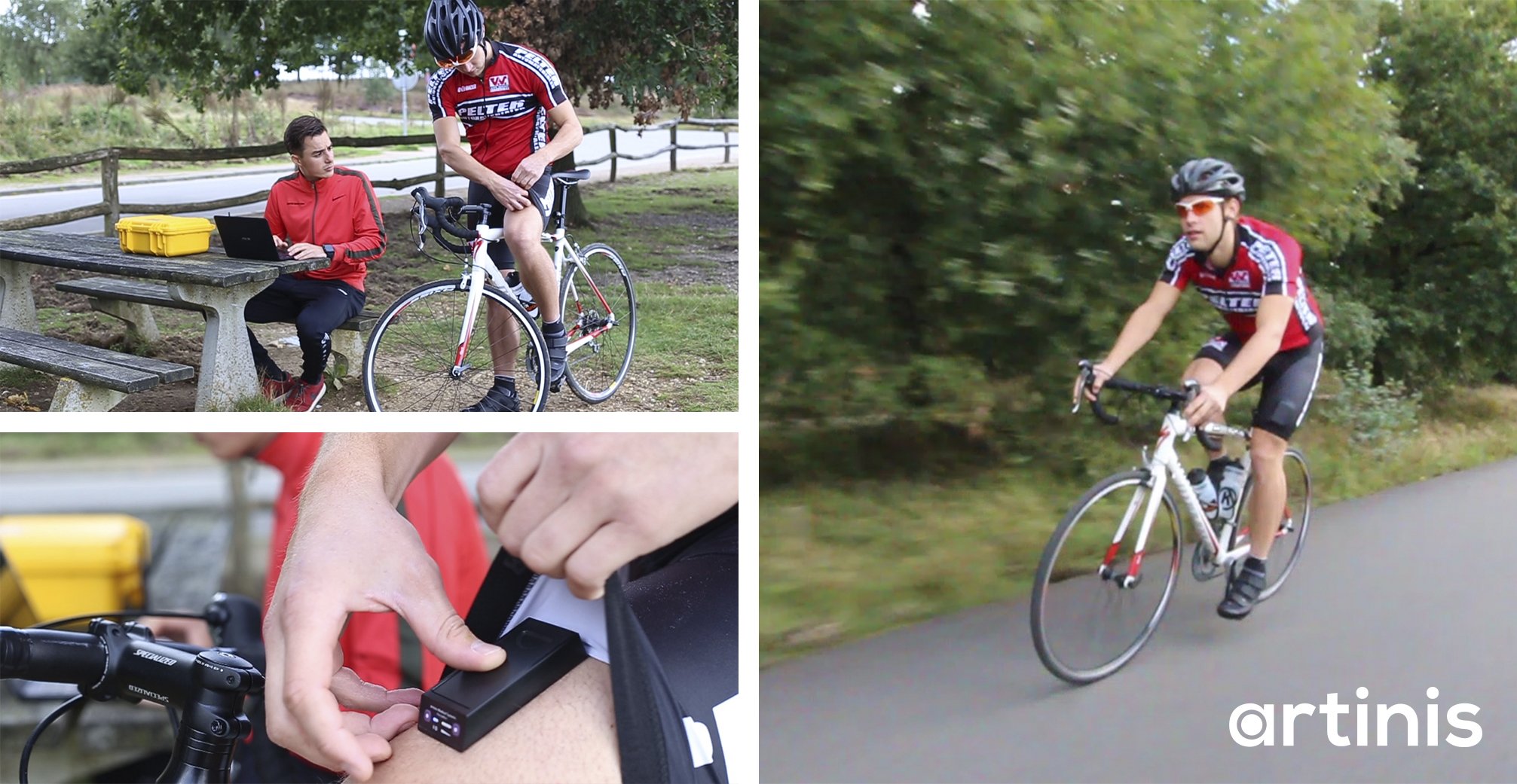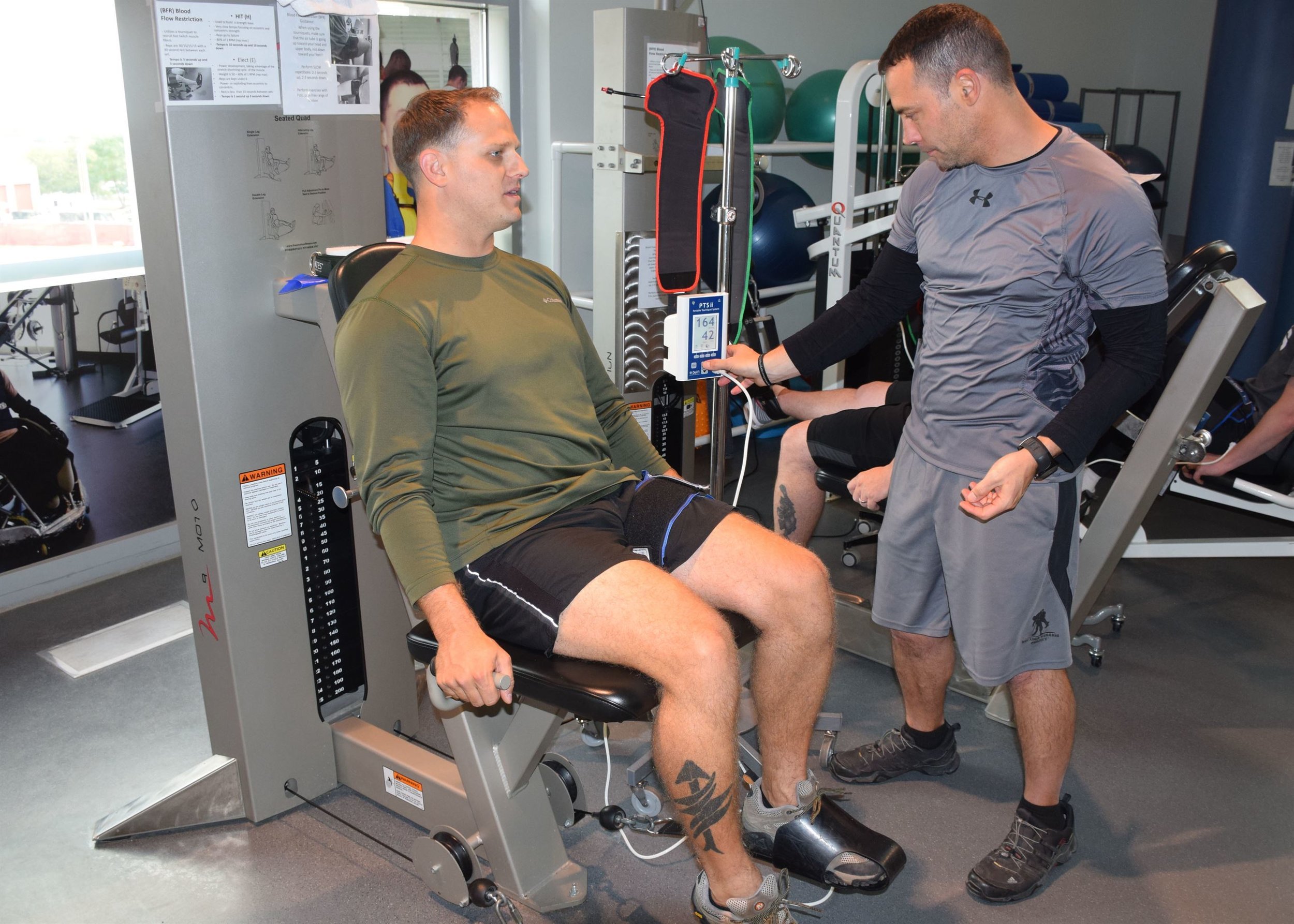Can restricting blood flow improve sports and exercise performance?
The artificial induction of ischemia (from Greek, meaning stopping/keeping back blood) was first shown to help protect cardiac muscle from injury in later occurring episodes of ischemia by Charles Murry and colleagues in 1986 [1]. This technique came to be called ischemic preconditioning (IPC).
In the last decade, this technique has received increased attention in the world of sports and exercise science as a so-called ergogenic aid—i.e., as a means of enhancing performance. However, in this context, it is not the heart that is deprived of blood. Rather, by placing blood restricting cuffs on the limb(s), it is the muscles that are subjected to a brief period of hypoxia. A meta-analysis from 2016 [2] found that IPC positively influences performance in aerobic and anaerobic types of exercise, such as swimming, cycling, and running. The underlying physiological effects of IPC are still unknown but are thought to include changes in tissue oxygenation and blood flow, mitochondrial function, endothelial function, and energy demands [2]. Noteworthy is that many effects seem to be systemic, rather than localized to the muscles deprived of blood. This is evidenced by the fact that there is a slightly larger improvement in performance when applying IPC to the limb(s) not primarily involved in the exercise.
An example protocol in a study of IPC and exercise involves inflating a cuff to about 200 mmHg to restrict arterial inflow of blood. This is then often repeated multiple times, in blocks of 5 to 10 minutes, interspersed with rest periods to allow for reperfusion. Next, after a longer rest period, the subjects go through the exercise or sports intervention of interest. Multiple sessions are often used to acquire baseline and/or further intervention data.
An excellent tool aiding is this type of investigation is the Portamon device. Using this, researchers can monitor the intended effect of restricting arterial inflow by tracking oxygenation changes in the muscle of interest [3,4]. Furthermore, as the Portamon is portable it can also be applied to monitor how the application of IPC affects muscle oxygenation during exercise interventions. The Portamon device has been used for a range of different types of studies, involving activities such as: cycling [5], strength testing [3,4], running [6], and speed skating [7].
The Portamon attached to the leg of a cyclist. Click the image to see a video showing other applications.
In parallel with the increased interest for IPC, research into so-called "blood flow restricted exercise" (BFR) has become more common. The two techniques are highly similar, however, in general, BFR is more often performed during exercise whilst IPC is generally performed prior to exercise. BFR has its origin in 1970s Japan, where it was pioneered by Yoshaki Sato [8] to increase the hypertrophic and strength increasing effects of resistance exercise. However, whereas the effect of IPC is systemic, the strength and hypertrophic effects of BFR mainly seem to be localized to the affected muscles. Muscle fiber swelling and indirect effects of metabolite production are thought to be responsible for the effect [9].
In 2015, a meta-analysis [10] reported that adding BFR to resistance anaerobic, exercise improved gains in strength and hypertrophy. While this is great news for athletes doing strength- and power-based sports, there is another—very important—advantage to BFR. It also allows strength and muscle building using much lower loads than traditionally used in resistance exercise. This opens the door for BFR as a great tool to use with injured or recovering athletes—and more importantly—in populations such as the elderly, and those suffering from chronic illness.
An example of BFR in action. Johnny Owens, chief of the Human Performance Optimization Program at the Center for the Intrepid’s outpatient rehabilitation center, Brooke Army Medical Center, Texas, adjusts the pressure of a tourniquet, while Marine Corps Staff Sgt. Brandon Kothman performs leg extensions. Owens has successfully helped over 200 personnel rebuild muscle strength and function over the past two years, with the help of BFR. U.S. Army photo by Robert D’Angelo
References.
[1] Murry CE, Jennings RB, Reimer KA. Preconditioning with ischemia: a delay of lethal cell injury in ischemic myocardium. Circulation. 1986 Nov 1;74(5):1124-36. doi: 10.1161/01.CIR.74.5.1124
[2] Salvador AF, De Aguiar RA, Lisbôa FD, Pereira KL, de O C, Rogério S, Caputo F. Ischemic Preconditioning and Exercise Performance: A Systematic Review and Meta-Analysis. International Journal of Sports Physiology & Performance. 2016 Jan 1;11(1). doi: 10.1123/ijspp.2015-0204
[3] Paradis-Deschênes P, Joanisse DR, Billaut F. Ischemic preconditioning increases muscle perfusion, oxygen uptake, and force in strength-trained athletes. Applied Physiology, Nutrition, and Metabolism. 2016 May 24;41(9):938-44. doi: 10.1139/apnm-2015-0561
[4] Paradis-Deschênes P, Joanisse DR, Billaut F. Sex-specific impact of ischemic preconditioning on tissue oxygenation and maximal concentric force. Frontiers in physiology. 2017 Jan 5;7:674. doi: 10.3389/fphys.2016.00674
[5] Griffin PJ, Ferguson RA, Gissane C, Bailey SJ, Patterson SD. Ischemic preconditioning enhances critical power during a 3 minute all-out cycling test. Journal of sports sciences. 2018 May 3;36(9):1038-43. doi: 10.1080/02640414.2017.1349923
[6] Seeger JP, Timmers S, Ploegmakers DJ, Cable NT, Hopman MT, Thijssen DH. Is delayed ischemic preconditioning as effective on running performance during a 5 km time trial as acute IPC?. Journal of science and medicine in sport. 2017 Feb 1;20(2):208-12. doi: 10.1016/j.jsams.2016.03.010
[7] Richard P, Billaut F. Time-trial Performance in Elite Speed Skaters After Remote Ischemic Preconditioning. International journal of sports physiology and performance. 2018:1-27. doi: 10.1123/ijspp.2018-0111
[8] Sato Y. The history and future of KAATSU training. International Journal of KAATSU Training Research. 2005;1(1):1-5. doi: 10.3806/ijktr.1.1
[9] Jessee MB, Mattocks KT, Buckner SL, Dankel SJ, Mouser JG, Abe T, Loenneke JP. Mechanisms of Blood Flow Restriction: The New Testament. Techniques in Orthopaedics. 2018 Jun 1;33(2):72-9. doi: 10.1097/BTO.0000000000000252
[10] Slysz J, Stultz J, Burr JF. The efficacy of blood flow restricted exercise: A systematic review & meta-analysis. Journal of science and medicine in sport. 2016 Aug 1;19(8):669-75. doi: 10.1016/j.jsams.2015.09.005


